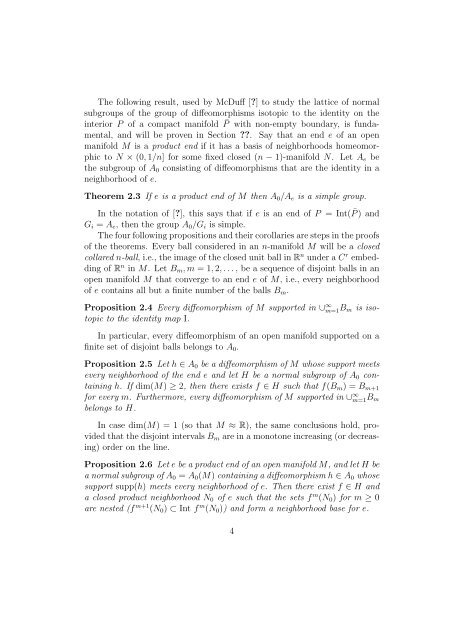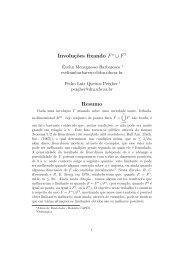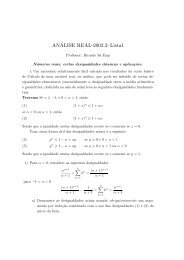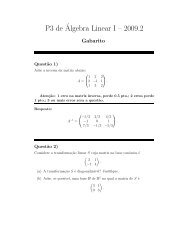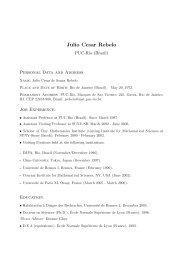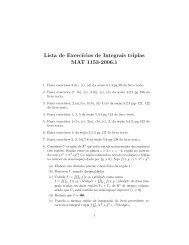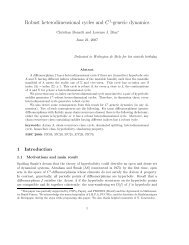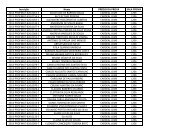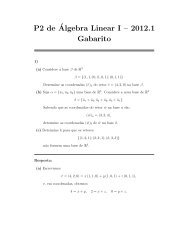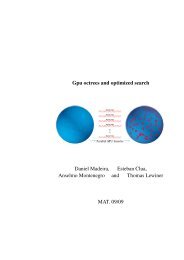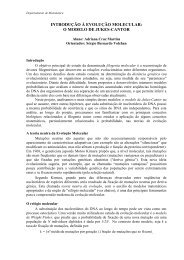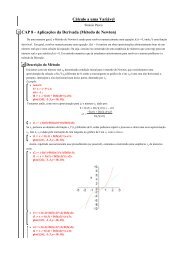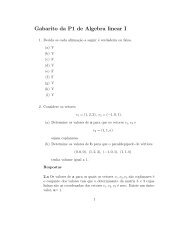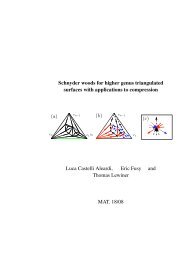NORMAL SUBGROUPS OF DIFFEOMORPHISM AND ...
NORMAL SUBGROUPS OF DIFFEOMORPHISM AND ...
NORMAL SUBGROUPS OF DIFFEOMORPHISM AND ...
Create successful ePaper yourself
Turn your PDF publications into a flip-book with our unique Google optimized e-Paper software.
The following result, used by McDuff [?] to study the lattice of normal<br />
subgroups of the group of diffeomorphisms isotopic to the identity on the<br />
interior P of a compact manifold ¯P with non-empty boundary, is fundamental,<br />
and will be proven in Section ??. Say that an end e of an open<br />
manifold M is a product end if it has a basis of neighborhoods homeomorphic<br />
to N × (0, 1/n] for some fixed closed (n − 1)-manifold N. Let A e be<br />
the subgroup of A 0 consisting of diffeomorphisms that are the identity in a<br />
neighborhood of e.<br />
Theorem 2.3 If e is a product end of M then A 0 /A e is a simple group.<br />
In the notation of [?], this says that if e is an end of P = Int( ¯P ) and<br />
G i = A e , then the group A 0 /G i is simple.<br />
The four following propositions and their corollaries are steps in the proofs<br />
of the theorems. Every ball considered in an n-manifold M will be a closed<br />
collared n-ball, i.e., the image of the closed unit ball in R n under a C r embedding<br />
of R n in M. Let B m , m = 1, 2, . . . , be a sequence of disjoint balls in an<br />
open manifold M that converge to an end e of M, i.e., every neighborhood<br />
of e contains all but a finite number of the balls B m .<br />
Proposition 2.4 Every diffeomorphism of M supported in ∪ ∞ m=1B m is isotopic<br />
to the identity map I.<br />
In particular, every diffeomorphism of an open manifold supported on a<br />
finite set of disjoint balls belongs to A 0 .<br />
Proposition 2.5 Let h ∈ A 0 be a diffeomorphism of M whose support meets<br />
every neighborhood of the end e and let H be a normal subgroup of A 0 containing<br />
h. If dim(M) ≥ 2, then there exists f ∈ H such that f(B m ) = B m+1<br />
for every m. Furthermore, every diffeomorphism of M supported in ∪ ∞ m=1B m<br />
belongs to H.<br />
In case dim(M) = 1 (so that M ≈ R), the same conclusions hold, provided<br />
that the disjoint intervals B m are in a monotone increasing (or decreasing)<br />
order on the line.<br />
Proposition 2.6 Let e be a product end of an open manifold M, and let H be<br />
a normal subgroup of A 0 = A 0 (M) containing a diffeomorphism h ∈ A 0 whose<br />
support supp(h) meets every neighborhood of e. Then there exist f ∈ H and<br />
a closed product neighborhood N 0 of e such that the sets f m (N 0 ) for m ≥ 0<br />
are nested (f m+1 (N 0 ) ⊂ Int f m (N 0 )) and form a neighborhood base for e.<br />
4


